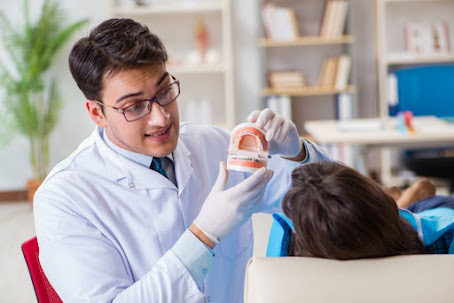All You Must Know About Orthodontic Headgear
The Orthodontics in
Santa Clarita,
has recently introduced a new headgear which is being increasingly used to
correct bite and support proper jaw alignment and growth. The orthodontist in
Valencia highly recommends headgears to children whose bites are severely out
of alignment. These headgears are worn partially outside of the mouth and are
suited for children whose jawbones are still growing. Therefore, in this post,
let us take a deeper look at the different types of headgears prescribed by
dentists:
Cervical
Pull
The cervical pull is mostly utilized for
correcting a malocclusion called an overjet. The overjet is identified by a
protruding top jaw and front teeth. In other words, an overjet is also known as
a bucktooth. The cervical pull headgear uses straps that wrap behind the neck or
cervical vertebrae and is then attached inside the mouth.
High
Pull
The high pull headgear is proscribed by
orthodontists to treat an overjet or an overbite. The overbite is classified as
a condition wherein children have teeth with an open bite, or in simple words,
there is no contact between their top and bottom front teeth. The high pull
utilizes straps that are attached from the upper jaw to the top and back of the
head.
Reverse
Pull
This headgear is used to correct an
underbite or an underdeveloped upper jaw. The reverse pull headgear basically
uses rubber bands that are attached to the braces on the top teeth.
The headgears are designed for kids with
severe jaw and tooth misalignment and whose jawbones are still growing. It is
usually advisable to wear headgear for at least 12 hours a day while the
treatment generally lasts for 1-2 years.



Comments
Post a Comment